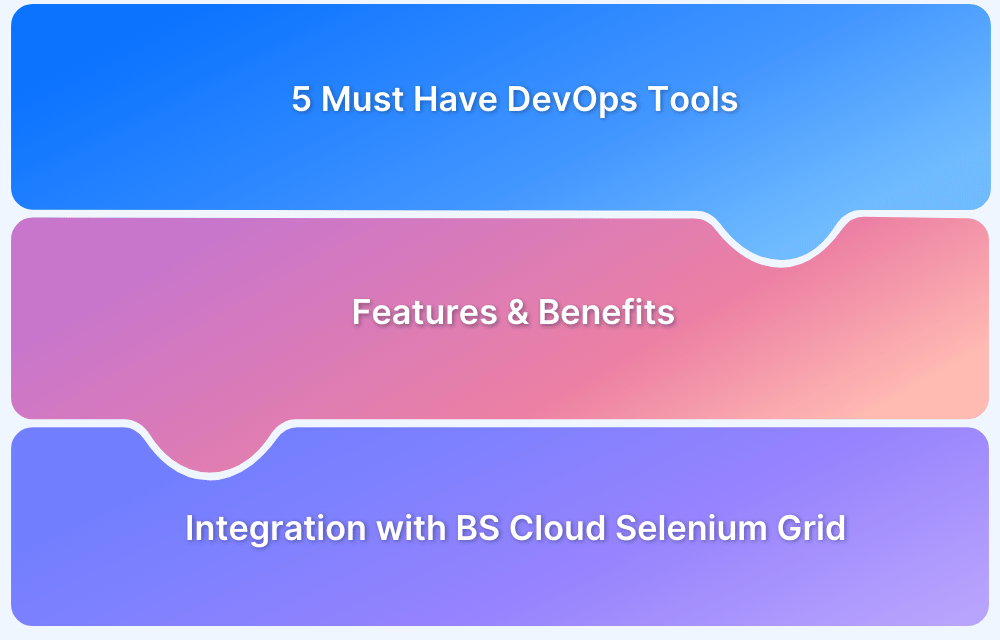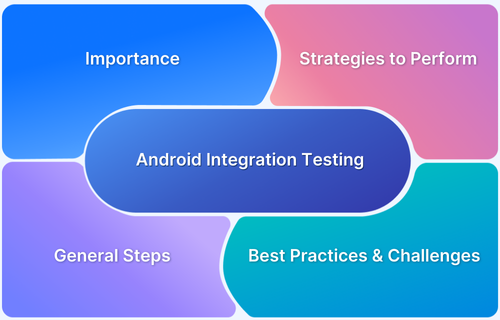Role and Responsibilities of QA managers in Agile organizations
Shreya Bose, Technical Content Writer at BrowserStack - December 15, 2020
In Agile Development, the focus on team-wide and function-wide collaboration usually means that no one person’s role is defined in watertight categories. Quintessentially agile teams leave code quality to dev-level testers, keeping it within the team. This helps improve the quality of code generated by evaluating teams on the basis of the code they create.
However, this has necessarily reoriented the role of QA, especially QA managers. In the waterfall model, QA comes in at the end of development. The software is tested, bugs identified, and the whole thing sent back to be work on again.
In Agile development, testers are trained to focus on quality and are offered the necessary tools to scope out bugs early on. However, there are factors their training does not prepare them for business concerns, customer preferences, etc.
This is where QA managers come in. In Agile ecosystems, their roles and responsibilities have shifted from daily testing to more consultative roles. Primarily, they act as subject matter experts who set guidelines, standards, and methodologies. They also act as the final authority on all quality issues, settling conflicts between all the teams working on a single project or software.
In light of such a changed ecosystem, this article will explore the roles and responsibilities of a QA Manager in Agile organizations.
Actually Building The Team
Every development team usually deals with one aspect of the process. A certain may be better than shaping the UI, while another’s forte might be establishing connections with third-party databases. Depending on the nature of the team’s work, relevant testers will have to be assigned that particular team. For example, if a team is working on the UI, the tests required (both manual testing and automation testing) will be quite different from a team working on implementing design aspects.
The primary QA manager role is to set up the QA team – decide which needs what type of tester, which tester is best suited to accomplish the necessary tasks and assign them accordingly. They must also determine the number of testers for a team, as well as define individual responsibilities. Naturally, they will also have to outline how these responsibilities blend and serve the team at large.
Setting Quality Standards
Among QA manager responsibilities, an important one is determining essential metrics for the QA process. Since websites and apps have become more complex in the last few years, the QA process has become equally drawn-out. Richer websites and apps usually require more comprehensive testing (more features, more functions) and must be cleared of thousands of bugs before they become suitable for public release.
Naturally, the QA process needs to be meticulously planned out and monitored so that it can be adequately successful. The most effective way to track the efficacy of QA activities is to use the correct metrics. Establish the markers of success in the planning stage, and match them with how each metric stands after the actual process.
QA managers must used their experience, domain knowledge and technical expertise to establish quality guidelines. These could range from detailing what testing methods are required for a particular software, what tools and frameworks are required, what strategies must be followed, what industry standards must be adhered to, etc.
The role of a QA manager is to ask the right questions –
- How to qualify a defect?
- How to define efficiency?
- How long will the test take?
- How much money does the test require?
- What is the level of bug severity?
- How many bugs have been resolved?
Once metrics have been established that will answer these questions, QA managers can gain a better view of the code quality and identify stop-gaps in quality and efficiency. Then, the manager can identify the issue, realign processes and optimize them for speed and quality.
Perform cross-functional evaluation
As mentioned before, different teams work on different aspects of a website or app, running tests on those specific aspects alone. The roles and responsibilities of quality control managers include running cross-functional tests that ensure that all features work in alignment with each other.
Tests by different teams are usually run in a variety of environments. The QA manager has to ensure that end-to-end tests are run in multiple environments AKA real device-browser-OS combinations. This lets them verify that the full system operates without functional, security, integration or other issues.
The QA manager observes and approves/disapproves of comprehensive system quality. When an issue shows up, they have to coordinate with dev testers, QA architects, and all the necessary teams to resolve whatever went wrong. The manager received data from all teams and is uniquely placed to monitor cross-team activity and identify bottlenecks.
Implementing Balance
It may occur that a certain team suddenly ends up needing more testers to catch up with deadlines. It may also happen that a deadline is brought forward and product release has to be sped up.
In such cases, the QA manager has to move testers between teams to address the immediate need for more testing. They may also choose to involve more developers (ones acquainted with testing) to conduct more intensive and wider tests.
Selecting the Testing Tools
Picking the right tools and frameworks is at the top of QA manager roles and responsibilities. Agile development depends great on automation.
Depending on the nature of the team, their processes, technical abilities and preferred methodologies, QA managers will have to pick the right tools to facilitate fast tests that generate accurate results everytime. While doing so, they have up take multiple factors into account, accommodate the need to multiple teams, keep timelines and budgets in mind.
Furthermore, all tests have to be run on real browsers and devices. Emulators and simulators simply do not offer the real user conditions that software must run within, making the results of any tests run on them inaccurate. Consider testing websites and apps on a real device cloud, preferably one that offers the latest devices, browsers, and OS versions. This applies to both manual and automated testing.
BrowserStack’s real device cloud provides 2000+ real browsers and devices for instant, on-demand testing. It also provides a cloud Selenium grid for automated testing, which can be accelerated by 10X with parallel testing. The cloud also provides integrations with popular CI/CD tools such as Jira, Jenkins, TeamCity, Travis CI, and much more. Additionally, there are in-built debugging tools that let testers identify and resolve bugs immediately. BrowserStack also facilitates Cypress testing on 30+ browser versions with instant, hassle-free parallelization.
Test manager roles and responsibilities in Agile have shifted to more comprehensive and administrative functions. To fulfil the tasks outlined above, QA managers have to stay updated about new tools, testing methods and leadership techniques. Their position is unique, and they are the ones who establish the processes and verification practices that produce the highest-quality code.



